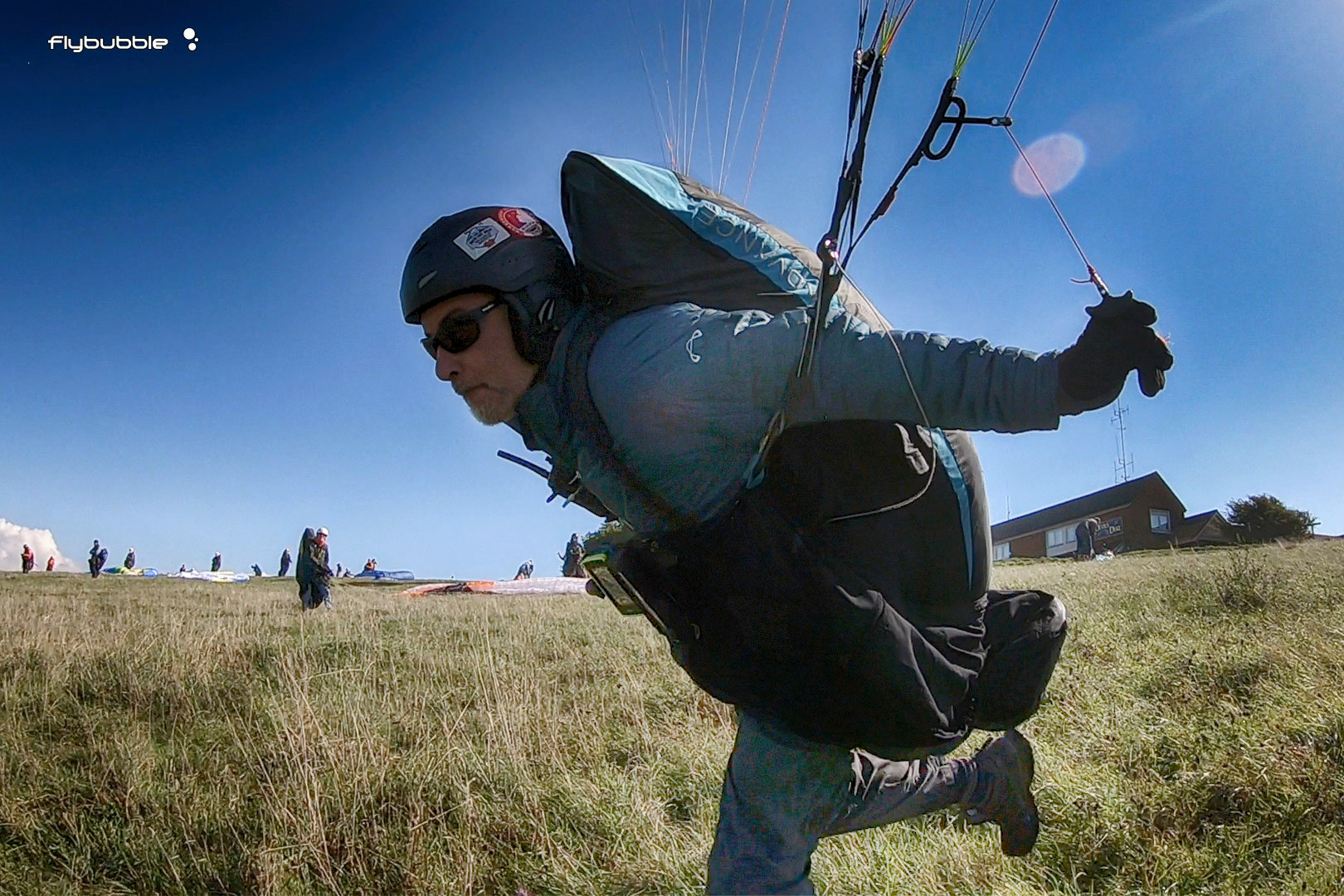
It looks cool, to just step gently off the hill, tip back into your pod, and swoop off, inches from the grass. There is a hidden danger in this bad habit, one which will show its teeth when launching into unexpected turbulence or striking a hidden object.
The simple fact is, you really should avoid landing on your bum. It’s no joke. Sitting down too early on launch can result in serious injury. For example, a pilot receiving a serious back injury from clipping a rock hidden in the grass. If he’d kept his legs down, he’d have walked away from it.
Your best landing gear is a pair of legs, in the Parachute Landing Fall position – dangling straight down beneath you. Doesn’t it make sense to keep them there whenever you are close to the ground? This simple habit will change ‘unexpected turbulence’ into ‘expected turbulence’.

During the launch run, generally the optimum stance to adopt is with your chest ahead of the karabiners, looking where you are going, with your arms swept back. As always, it's important to keep a good enough feel on the brakes, so you can feel and react to any changes, whilst ensuring your hands are high enough so you are not applying too much brake. If you struggle to get your hands high enough with your palms facing downwards, turning your palms inwards and upwards can help you reach higher, applying less brake. In light wind, to get maximum running speed it’s often more comfortable to drop your head slightly until you lift off. As with all techniques, practice makes perfect. The more you do it, the more it will feel natural - and the more in control you will be, at all stages of the launch.
Critics of this technique say you’ll fall on your face. They don’t understand how the technique works. If the wing goes soft, you carry the weight on your legs: you’re still in a balanced position. As the wing lifts you let it carry more of your weight.
If you want to see where the wing is, look to the sides, to the wingtips. The further forward you lean, the easier it is to see to the sides. There is no point in checking the centre of the wing by looking straight up. The centre gives you no information (it’s just there), and when you stand up to look you take the loading off the wing so it decelerates and begins to drop back. The lack of loading increases the chance of the wing collapsing. The harness rides up and the leg straps wedge themselves in your groin, making it very difficult to get into the harness when flying.

If your chest is ahead of the karabiners, your legstraps will be loose, allowing freedom of movement. When done correctly, you’ll have uncomfortable pressure on your ribs from the chest strap, and on your biceps from the risers. After an hour of practising launch runs, you’ll have some bruises there. Great! You’re doing it right.
The advantage of this stance is that it gives you continuous balance, so you don’t upset the wing by being rotated around the pivot point of the karabiners and trying to balance on the brakes.
See how this works in this short video
Brought to you by Flybubble
Like what we do? The best way to thank and support us is to buy gear from us and recommend us to others. Review our service on Trustpilot and our products on Flybubble Shop. You can also subscribe to Flybubble Patreon. Thank you!

